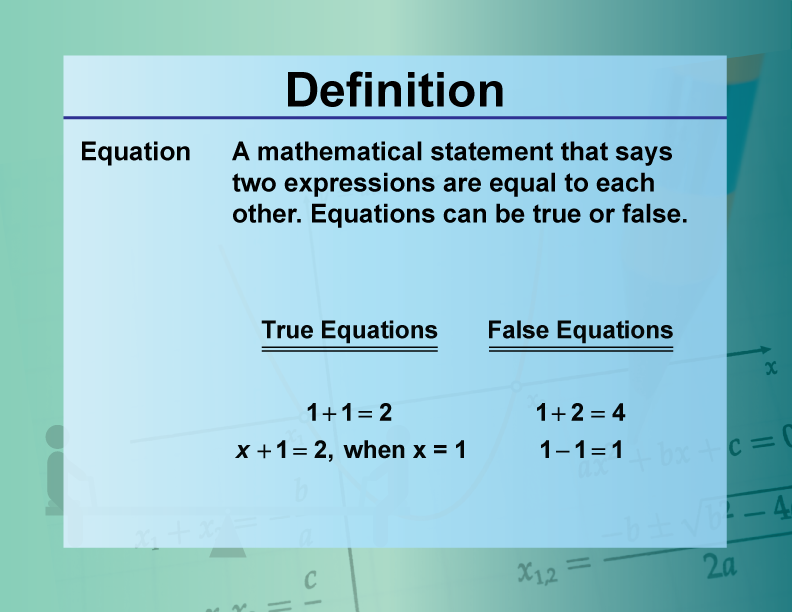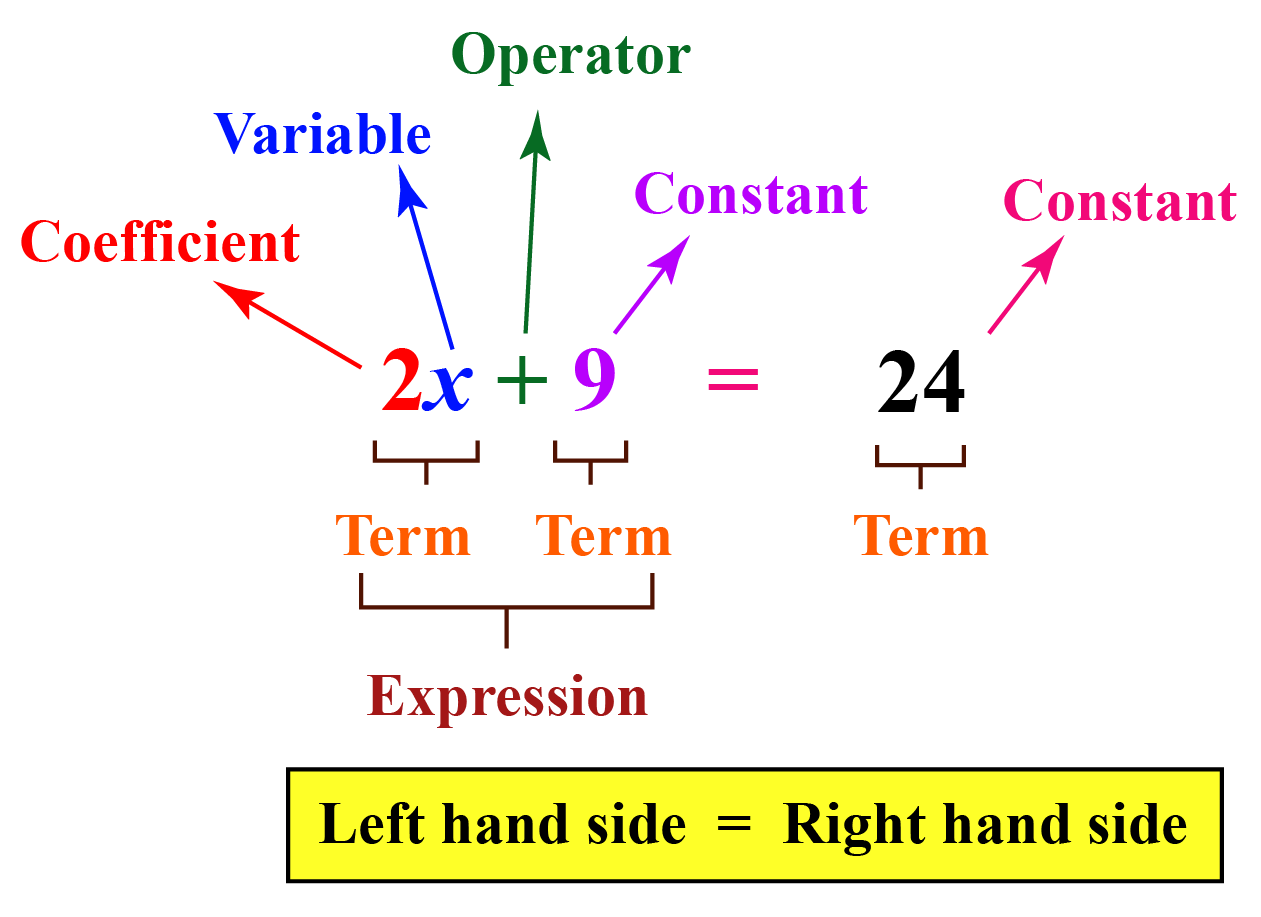Understanding Equations: Types, Solving & Examples - Explained!
Can a seemingly simple symbol hold the keys to unlocking complex mathematical concepts? Indeed, the equals sign (=), the linchpin of the mathematical equation, is the gateway to understanding relationships, solving problems, and exploring the very fabric of the universe, from the simplest arithmetic to the most advanced physics.
An equation, at its core, is a mathematical statement that asserts the equivalence of two expressions. It's a declaration of balance, where the values on one side of the equals sign are mirrored on the other. This fundamental concept underpins a vast array of mathematical disciplines and real-world applications. Understanding equations is crucial for everything from balancing a checkbook to designing a skyscraper.
Let's explore the world of equations, breaking down their components and unraveling their mysteries.
Exploring the World of Equations
The genesis of mathematics has been propelled by the quest to decipher and resolve the questions posed by equations. Equations vary in complexity, ranging from the straightforward to the incredibly intricate. At its heart, an equation is a statement of equality between two expressions, often comprising variables and/or numbers. These equations are the foundation upon which a vast array of mathematical concepts and practical applications are built. Understanding and manipulating equations is crucial, extending far beyond the confines of the classroom.
An equation includes either a term or an expression, and the presence of the equal sign (=) is a definitive characteristic. It signifies that two entities are equal, acting as an operator specifically reserved for equations. Algebraic equations, which juxtapose two algebraic expressions with an equal sign, are also known as polynomial equations because both sides of the equality sign contain polynomials. These polynomials represent the building blocks of many mathematical models.
Consider the equation 2x + 10 = 0. This is a linear equation in one variable. It's a question, seeking the value of 'x' that satisfies the balance. The solution, in this case, is x = -5. Then we have quadratic equations which take the form of Ax2 + Bx + C = 0, where A, B, and C are constants.
- Harrison Ford Calista Flockhart Celebrate Liams Graduation
- Demetress Bell Karl Malone The Untold Story What Happened
The degree of an equation is determined by the highest power of the variable it contains. The complexity and the shape of its graph are both determined by this degree. For instance, linear equations (degree 1) yield straight lines when graphed. Quadratic equations (degree 2), result in parabolas.
Equations can be solved using a variety of methods, including splitting the middle term, completing the square, or employing the discriminant method. Cubic equations, which have a degree of 3, are equations where the highest exponent of at least one of the terms is 3. The standard form of a cubic equation is represented as ax3 + bx2 + cx + d = 0, where 'a' cannot be zero.
The equation calculator allows you to take a simple or complex equation and solve it by the best method possible.
Deciphering Equation Components
To fully grasp the nature of equations, it's vital to identify their constituent parts. Consider an equation that states that two things are equal. In the equation, 4x - 7 = 5, we see that the expressions on either side of the equals sign are 4x - 7 and 5 respectively. Variables, represented by letters like 'x,' stand in for unknown values. This is where algebra comes into play, enabling us to solve for the unknown and make calculations even when we don't have the exact numbers.
Mathematicians employ specific terminology to talk about an equation. The equation remains unchanged if the left-hand side (LHS) and the right-hand side (RHS) are interchanged. Solving an equation involves finding the value of the variable that makes the equation true. The process relies on isolating the variable and determining its value. Various methods are available for solving equations, including linear, quadratic, rational, or radical equations, each requiring a specialized approach.
Formulas vs. Equations
While closely related, equations and formulas serve different purposes. An equation asserts the equality between two expressions, while a formula is a set of instructions or a rule expressed using variables and symbols. A formula provides a clear method for determining a certain outcome. For example, the Celsius to Fahrenheit conversion formula, °F = (°C 9/5) + 32, gives explicit steps for converting temperatures between the two scales. It is a rule. An equation says that two things are equal. Both are valuable in understanding and applying mathematical principles.
Applications and Examples
Equations are ubiquitous. The equation of a line is a foundational concept in algebra. There are different forms of equations of lines that are used to represent linear relationships on a coordinate plane. The standard equation of a parabola is used to represent a parabola algebraically in the coordinate plane. The standard form of parabola is y2 = 4ax or x2 = 4ay. The diagonal formula is used to calculate the length of the diagonal of any polygon.
Here are some examples:
- Linear Equation in One Variable:
2x + 10 = 0 - Linear Equation in Two Variables:
y = mx + c - Quadratic Equation:
Ax2 + Bx + C = 0
The graph of y = 2x+1 is a straight line.
Equations appear frequently in mathematics because mathematicians love to use equal signs.
In essence, equations are questions, and the development of mathematics has been driven by attempts to find answers to those questions in a systematic way. Equations vary in complexity from simple
Equations are questions, and the development of mathematics has been driven by attempts to find answers to those questions in a systematic way.
What is acceleration formula?
The acceleration formula, for instance, is a fundamental concept in physics. It is given by a = (v - u)/t, where 'a' is acceleration, 'v' is the final velocity, 'u' is the initial velocity, and 't' is time. It is used to measure the rate of change of velocity of an object over time.
The Importance of the Equals Sign
The equals sign (=) is a fundamental symbol in mathematics, acting as the cornerstone for expressing equality between two expressions. Its presence is an absolute requirement within any equation. Equations exist only when there's an equal sign. It says that two things are equal. It is an operator that is used only in the equations.
What is on the left (x + 2) is equal to what is on the right (6) so an equation is a statement this equals that (note:
This equation has the solution x=4, read how to solve equations.
Solving Equations
Solving equations means determining which values of the variables make the equation true. Solving an equation depends on what type of equation that we are dealing with. The variable for which the value is to be found is isolated and the solution is obtained. A formula is a set of instructions for creating a desired result.
Equations can be linear equations, quadratic equations, rational equations, or radical equations. An equation is any expression with an equals sign, so your example is by definition an equation.



Detail Author:
- Name : Alex Doyle
- Username : brekke.rosemarie
- Email : rhianna.rempel@kessler.org
- Birthdate : 1975-11-08
- Address : 995 Hansen Ports Suite 336 Tremblaymouth, FL 24562-4882
- Phone : 205.626.2241
- Company : Halvorson-Crooks
- Job : Paving Equipment Operator
- Bio : Nostrum quia nisi sed eius consequatur saepe. Id at et quis incidunt at. Alias ea corporis necessitatibus. Assumenda quam omnis corrupti quia quo tenetur alias quia.
Socials
facebook:
- url : https://facebook.com/cschaefer
- username : cschaefer
- bio : Sint sint vitae sit minima ab pariatur voluptas tempore.
- followers : 4046
- following : 1923
twitter:
- url : https://twitter.com/schaeferc
- username : schaeferc
- bio : Est earum accusamus qui dolorem. Nihil enim ut et. Libero voluptatum earum maxime sint. Omnis id sint distinctio velit repellendus molestias temporibus soluta.
- followers : 1925
- following : 1263